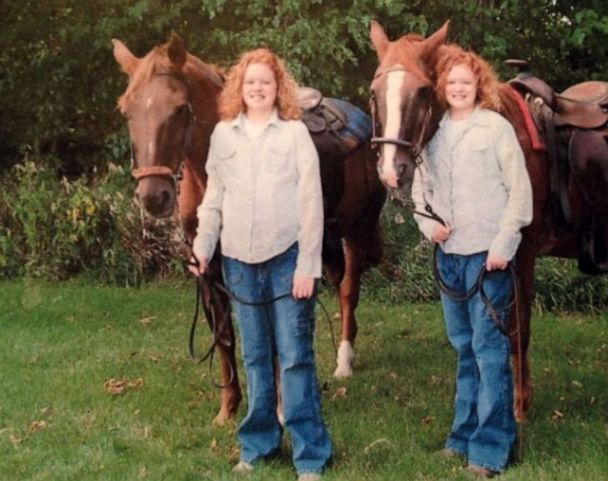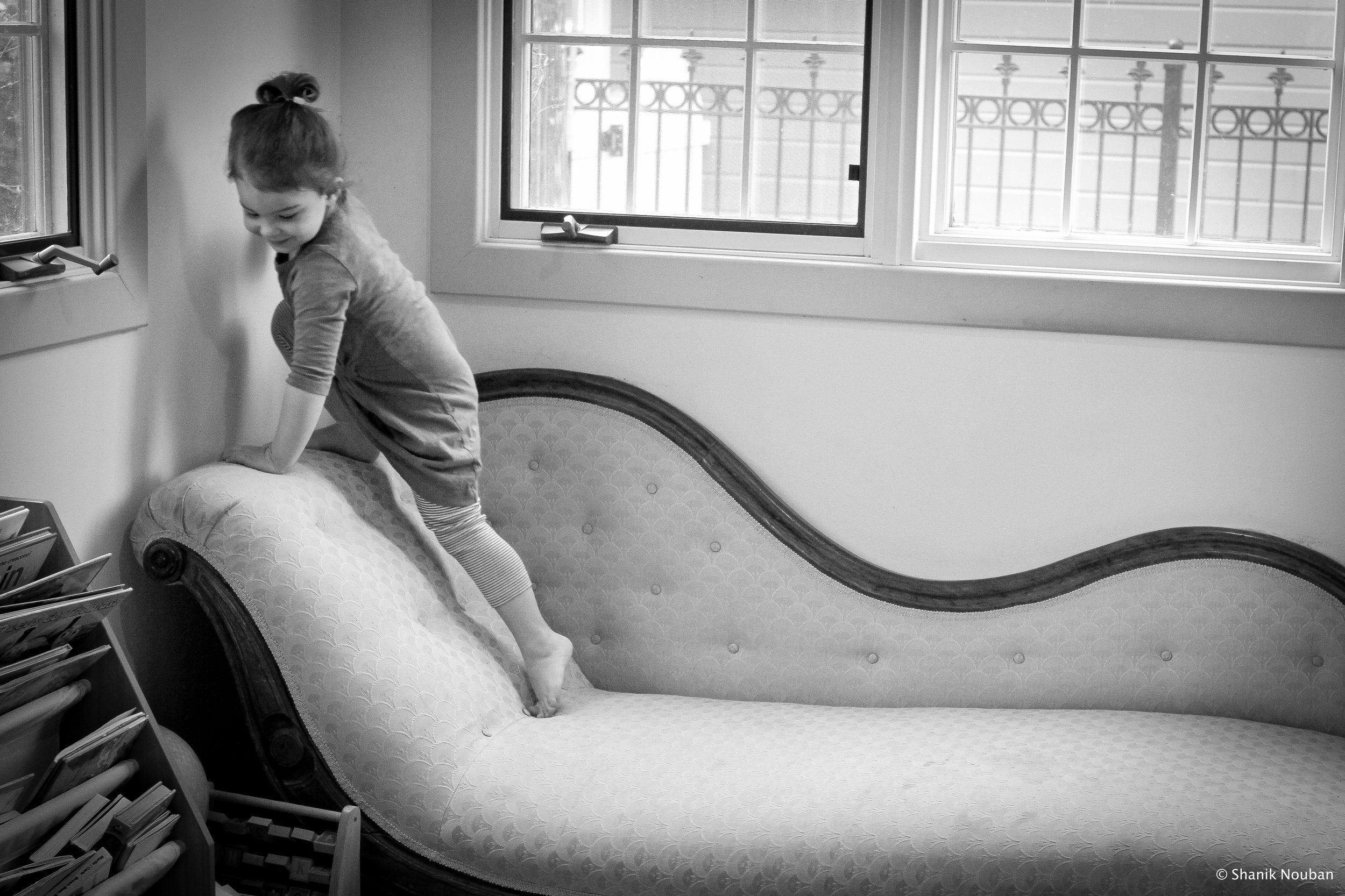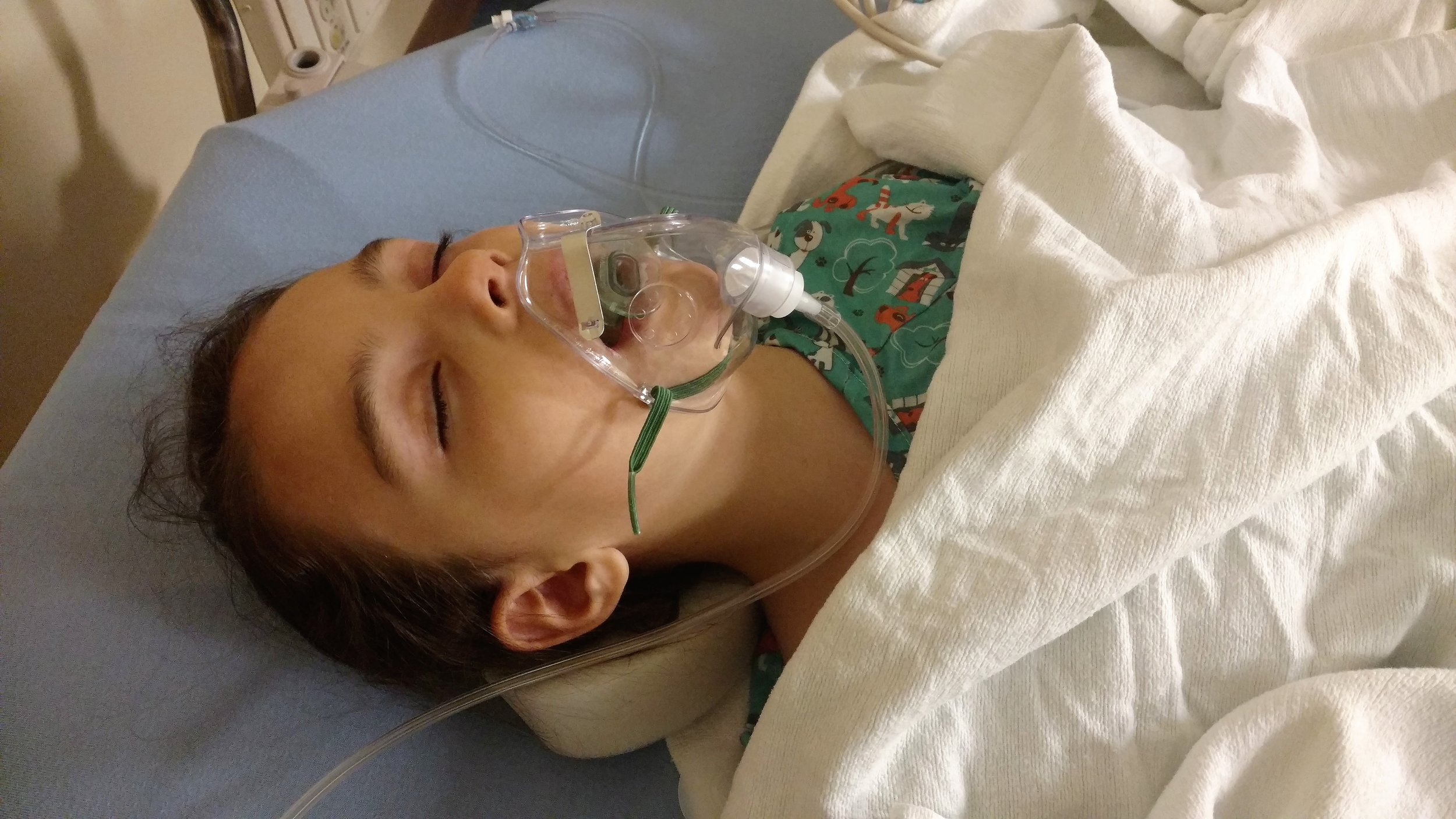I held my breath and knocked. I waited, and turned my head to look down the empty hallway to my right, the grey carpet and grey walls fading into each other. I looked back and found the doorbell. Taking a deep breath, I reached out and pushed the round black button. Footsteps grew louder. The door opened and there was Lori, just as I had seen her in articles online. Her big smile and bright blonde hair welcomed me into the apartment. We wrapped our arms around each other tightly and held on for what seemed like minutes. We were strangers with no reason to cross paths. But life had thrown something at both of us that bound us forever.
Lori and her husband Jeff live in Iowa, where they brought up their identical twin daughters, Alex and Jaci. The two little girls with curly carrot-colored locks were inseparable and loved horses and being outside. But at just eleven years old, Alex started experiencing neurological symptoms. After a rapid decline, she was expected to live less than one year, but decided to go on a ventilator that offered her respiratory assistance. She fought courageously for six years before her body gave in and her family said goodbye to their sweet daughter forever. Because Alex decided to hold on for years, doctors were able to eventually figure out that she suffered from an incredibly rare form of ALS, or Lou Gehrig’s Disease. Only a handful of cases with an onset this early had been discovered. The family had no choice but to slowly pull their life back together and remind themselves how grateful they were that Jaci had been spared. She grew to be a woman of twenty-five who was constantly on-the-go, and whose love of horses and adventure gave her renewed energy and life.
Out of nowhere, this past winter, Jaci began experiencing the same devastating symptoms that her sister had battled many years before. How could this be? Identical twins, both with the same form of ALS, but symptoms fourteen years apart? No one had an answer, but reality hit. Jaci tested positive for the same genetic disorder that had ripped her sister’s childhood and life away from her. With no cure or treatment for ALS, she will soon find herself trapped in her own body, unable to move, eat, speak or breathe. This cruel disease would allow her mind to stay strong, her thoughts to remain clear, making her remaining short life unbearable and full of fear.
Before walking into the apartment that day, I had flipped through articles from Iowa newspapers telling Alex’s story, then Jaci’s. I watched two little identical red-haired girls learn to walk, ride their ponies, and look at each other and laugh. As I read on, only Jaci appeared in the photos, her bright blue eyes shining. I watched her continue to grow, always outdoors, standing in fields of horses and cows where she was happiest, her head turned back to look at the camera, her face beaming with life.
Now, here I was, standing in the entryway of her family’s rental apartment in New York City. I stood back and took another breath as I walked around the corner to where Jaci sat in the living room waiting for me. In just the past six months, this outgoing young woman at the height of her life had rapidly lost her abilities. This past Christmas, she was any other girl. But just a few months later she was only able to take a few steps with her parents’ help. And now she was confined to an armchair. Earlier this spring, she could barely use her arms to dress herself, feed herself, and grab what she needed. Now her arms lay limp in her lap, her fingers slowly lifted and fell to push the buttons on the remote to the TV in front of her. The armchair she sat in was reclined to keep her in a comfortable position. An automated lift was parked in the hallway behind her.
I leaned down at an awkward angle and gently slid my hands between the chair and her back to hug her. I had fought off my tears all morning, but I could no longer hold them back. I let my emotions go and sobbed into her red hair as I held her, her arms laying still on her lap. The room was silent. As I pulled away from Jaci, I looked into her bright blue eyes filled with tears and we both smiled. I told her how honored I was to meet her. She pulled the muscles in her jaw back and her lips followed. She took a short breath and said hi. Her breathing was now compromised. A breathing machine sat next to her chair. But her speech was still perfectly clear. I could see that she had adapted to her new way of talking, taking small breathes before each sentence or word.
We sat and talked. She told me about her long-time partner, her horse Bud. She excitedly asked her mom to show me the photo of her from last Fall when she finally mastered standing up on her saddle, tall and steady as Bud held perfectly still. I looked down at her legs that lay across a pillow on her chair, not moving.
My mind had been on this moment for the past ten days and now I was sitting with this incredibly brave girl who was following in Mila’s footsteps. As Jaci prepared to die, just months after experiencing her very first symptoms, something amazing happened. A foundation the family had been in touch with – Project ALS – came across Mila’s story. They learned about Milasen - the antisense oligonucleotide, or ASO, which had been designed and produced just for Mila - and they read about the promise that it offered. They teamed up with a scientist in New York and together they asked themselves, “why couldn’t Mila’s approach be applied to Jaci”? It offered promise, and otherwise Jaci had no hope. The sand in her hourglass was running out quickly. Jaci’s team raced to produce an ASO for her, as she was losing abilities by the week. Just as it looked like time would run out, the work that Dr Yu and I were doing behind the scenes to pave this new treatment path directly expedited Jaci’s treatment.
Last week, Jaci and her parents traveled to NYC and she became the second person in the world to receive a rapid turnaround genetic treatment, following in Mila’s footstepss. She too has been given an incredible second chance at life.
I left Jaci’s apartment that day full of hope.
What initially seemed like a crazy notion has transformed into an exciting new paradigm in the world of science and medicine. With Mila’s story, Dr Yu and I have challenged the world to imagine a future where instead of one drug that treats thousands, there could be thousands of drugs that each treat one person or just a few – children and adults that otherwise have no hope, no treatment, and no attention from large pharmaceutical companies. Individually, they could seem too small to some to make a difference. But together, the impact would be enormous.
Mila was the first. Her story has broken ice. It proved that an individualized genetic medicine was feasible and could save a life. And the time from diagnosis to treatment could be incredibly rapid, less than one year – something unheard of in drug development that takes on average an overwhelming twelve years. It is still too early to know whether Mila and Jaci’s treatments were in time for them, but what we learn from these two amazing pioneers, fighters, will help us define a new process and eventually scale it to help exponentially more people in desperate need.
I envision a future where the Mila’s and Jaci’s of the world walk into rapid customized treatment centers within hospitals around the world - at first, maybe one out of ten will walk out with a treatment in time to stop their disease progression and give them a chance at life. However, as science and technology quickly advance, more tools will be added to the genetic toolbox and then three, five, eight out of ten people who walk into a center will be given another shot. Farther in the future, I imagine newborns screened at birth who can access a personalized treatment that would stop their disease before symptoms ever begin. These families would never know the devastation of Batten or ALS.
There are now two dots connected by a line. Our fight for Mila has already given one more girl an unheard of second chance at life. We keep pushing forward and continue drawing the line…






























